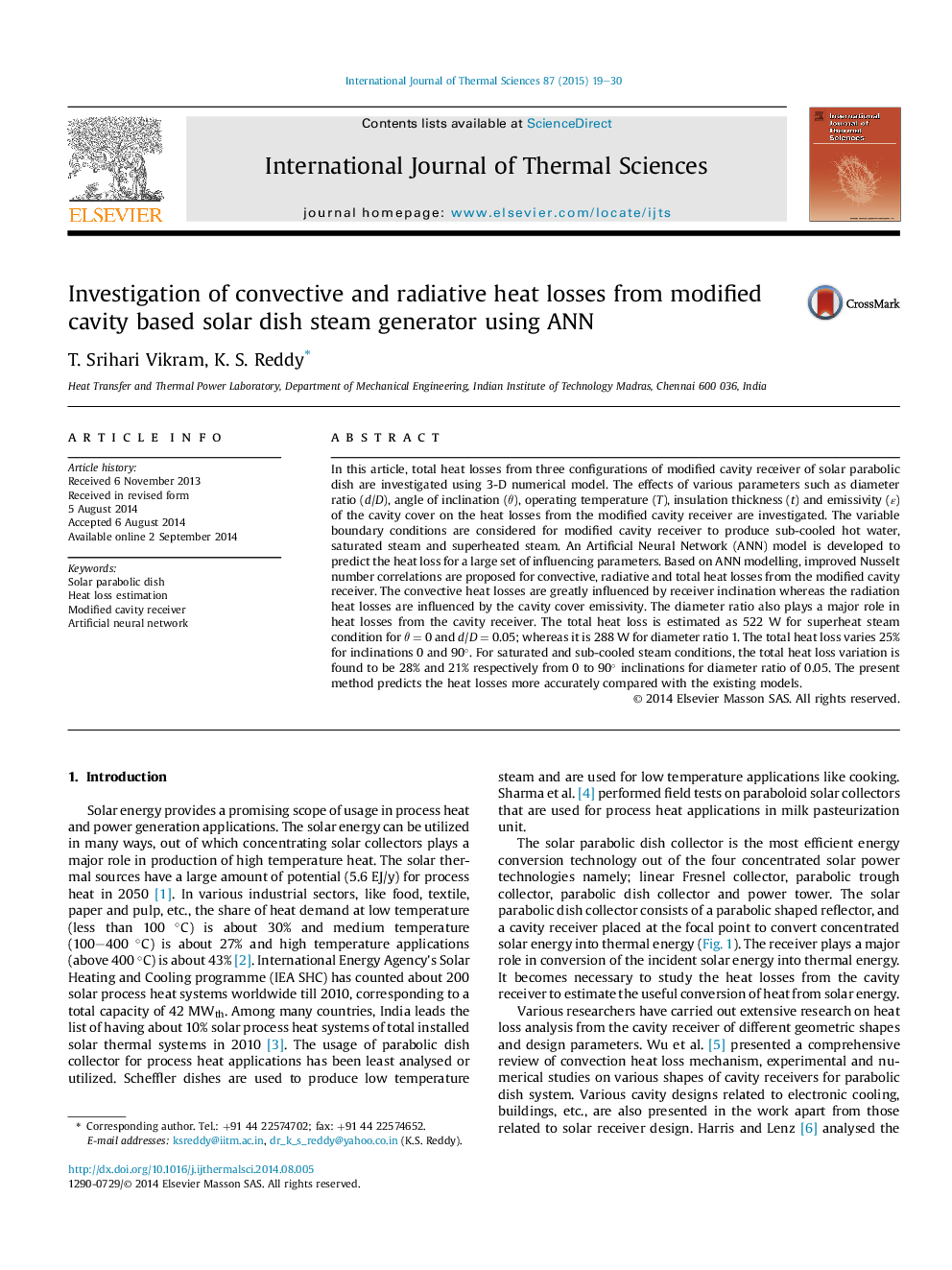| Article ID | Journal | Published Year | Pages | File Type |
|---|---|---|---|---|
| 668608 | International Journal of Thermal Sciences | 2015 | 12 Pages |
•Estimation of heat losses from modified cavity receiver of solar dish.•Investigation of cavity receiver under saturated and superheated boiler conditions.•Development of Nusselt number correlation for total heat loss.•Artificial neural network simulations are carried out to predict heat loss.
In this article, total heat losses from three configurations of modified cavity receiver of solar parabolic dish are investigated using 3-D numerical model. The effects of various parameters such as diameter ratio (d/D), angle of inclination (θ), operating temperature (T), insulation thickness (t) and emissivity (ε) of the cavity cover on the heat losses from the modified cavity receiver are investigated. The variable boundary conditions are considered for modified cavity receiver to produce sub-cooled hot water, saturated steam and superheated steam. An Artificial Neural Network (ANN) model is developed to predict the heat loss for a large set of influencing parameters. Based on ANN modelling, improved Nusselt number correlations are proposed for convective, radiative and total heat losses from the modified cavity receiver. The convective heat losses are greatly influenced by receiver inclination whereas the radiation heat losses are influenced by the cavity cover emissivity. The diameter ratio also plays a major role in heat losses from the cavity receiver. The total heat loss is estimated as 522 W for superheat steam condition for θ = 0 and d/D = 0.05; whereas it is 288 W for diameter ratio 1. The total heat loss varies 25% for inclinations 0 and 90°. For saturated and sub-cooled steam conditions, the total heat loss variation is found to be 28% and 21% respectively from 0 to 90° inclinations for diameter ratio of 0.05. The present method predicts the heat losses more accurately compared with the existing models.
